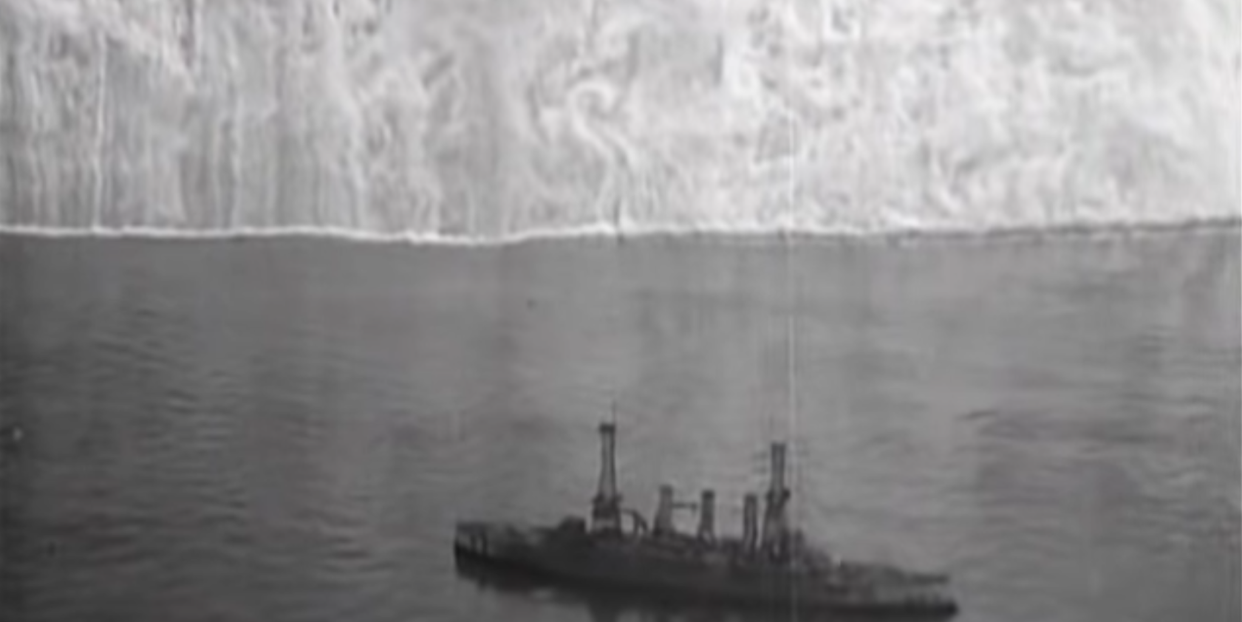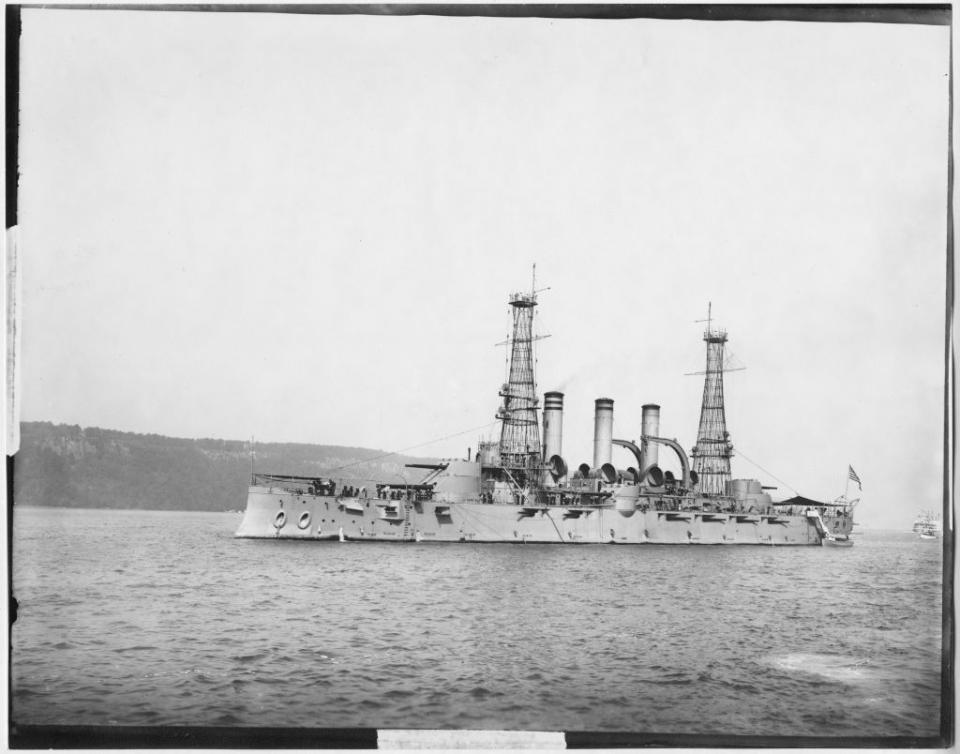Watch an Airplane Make This Battleship ‘Disappear’ in Nearly 100-Year-Old Video

According to Interesting Engineering, this 1923 film footage shows an airplane laying down a smoke screen in front of a U.S. Navy battleship.
The smoke screen is likely made from titanium tetrachloride, a corrosive liquid that reacts with air moisture.
Smoke screens are used to create “terrain” in warfare but offer no protection other than concealment.
A 1923 video digitized and uploaded to YouTube shows how early 20th century technology could make a battleship blind to an oncoming aerial attack. The video shows a biplane soaring over warships of the U.S. Navy and creating an instantaneous wall of smoke large enough to hide a fleet behind.
The video, produced by the U.S. Army Engineering Division, shows an airplane of the Army Air Service dropping a substance that instantly creates a screen hundreds of feet tall. The film is footage from a series of then-controversial military exercises that took place off the East Coast of the United States from 1921 to 1923.
🚁 You like great military tech. So do we! Let's stay keep you up to date.
Army Brigadier General William “Billy” Mitchell, an early and outspoken proponent of air power, forced a series of exercises that pitted his fleet of Martin MB-2 biplane bombers against warships of the U.S. Navy. Mitchell believed that air power was superior to naval power and that a handful of airplanes could cripple the largest battleship.
The silent video caption states that the smoke screen was laid “to protect the bombing plane,” presumably from the battleship’s anti-aircraft fire. The plane laying the smoke screen and the plane filming the process also appear to be Martin MB-2s. The big gun warship in the background is either USS New Jersey or USS Virginia, two surplus battleships of the same class provided by the Navy and sunk by Mitchell’s bombers during the exercises.

According to one particularly useful YouTube commenter, the substance is probably titanium tetrachloride. Titanium Tetrachloride, according to the U.S. Air Force, is a colorless liquid that reacts with air moisture to form smoke consisting of hydrated titanium acid and hydrogen chloride. It is also dangerous to work with, an irritant to respiratory systems, and can corrode metal.
The military use of smoke is primarily to provide a means of concealment. Smoke can hide friendly forces from enemy forces and can be used as an offensive or defensive tool. In warfare, smoke is seen as a temporary means of creating line of sight blocking terrain, ideally as impenetrable to the human eye as a mountain made of rock. It does not offer the same physical protection a real mountain does as gunfire, artillery, and other weapons can shoot through smoke.
Today’s technology has rendered smoke obsolete, however. Most forms of radar and infrared sensors can see straight through conventional smoke, though how imaging infrared cameras would perceive a titanium tetrachloride smokescreen is unknown.
In addition, the ability of aircraft to launch radar-guided anti-ship cruise missiles fifty or more miles away from their targets makes smokescreens irrelevant. Instead, warplanes of today use speed, low altitude flying, electronic warfare jamming and stealth technology to sneak up on enemy warships. It’s definitely more environmentally friendly than curtains of titanium acid.
You Might Also Like

